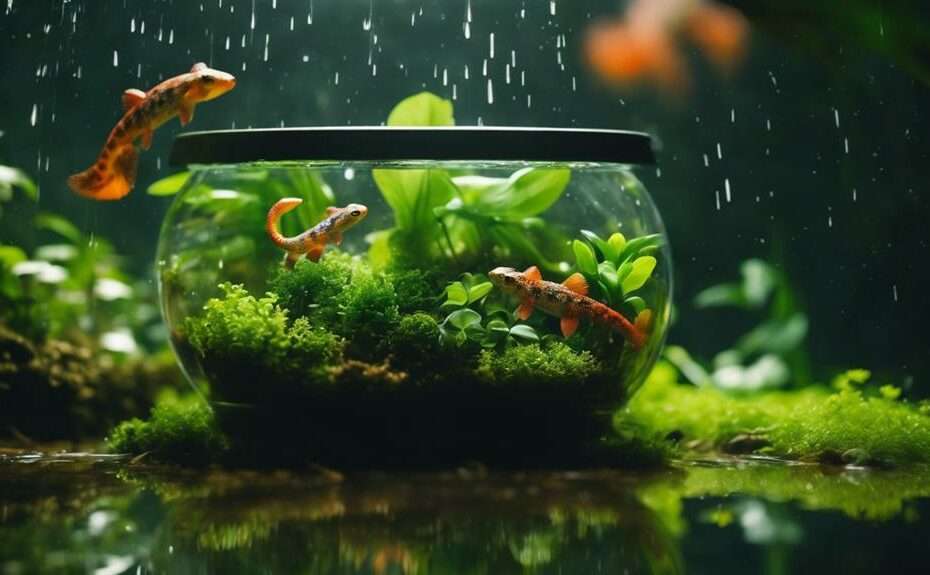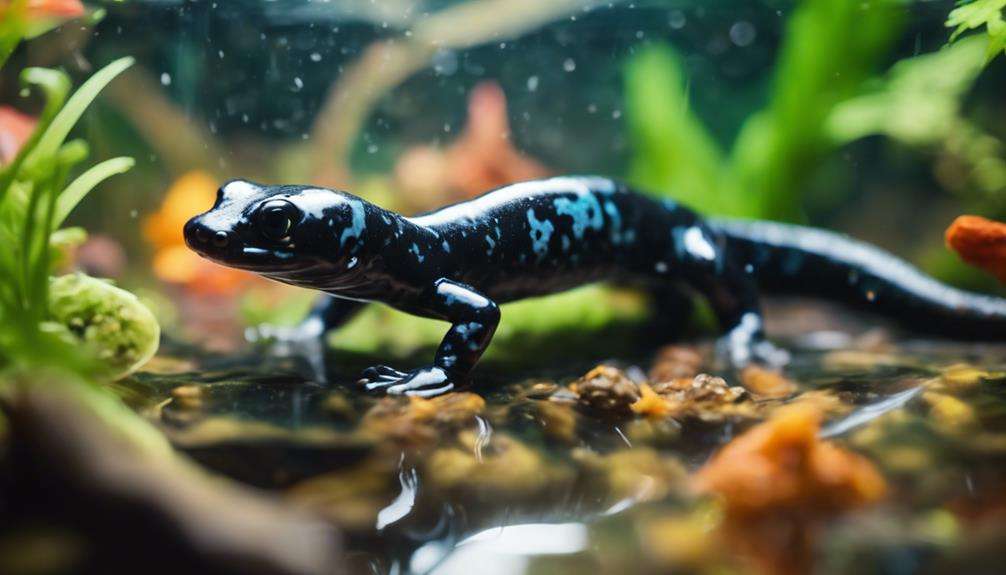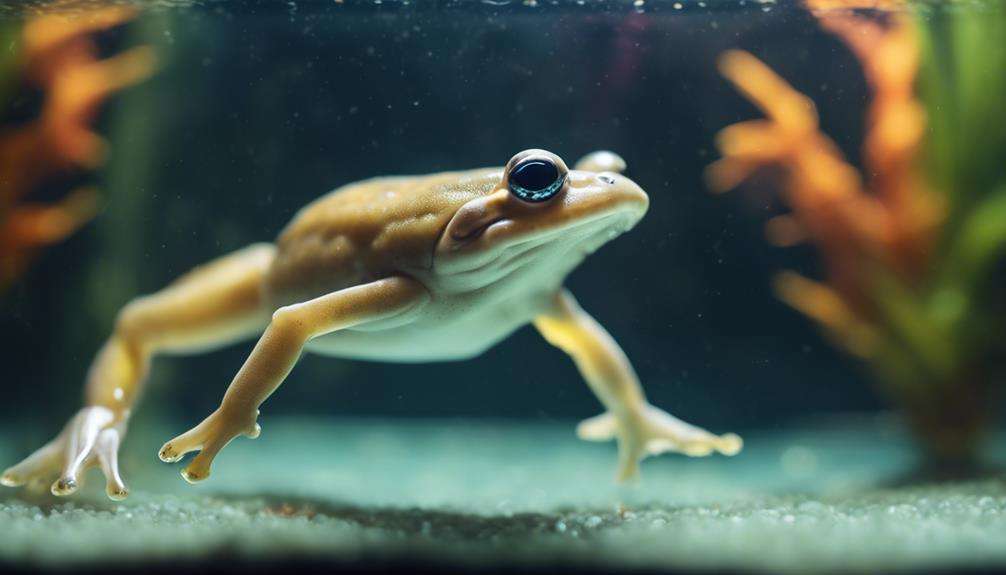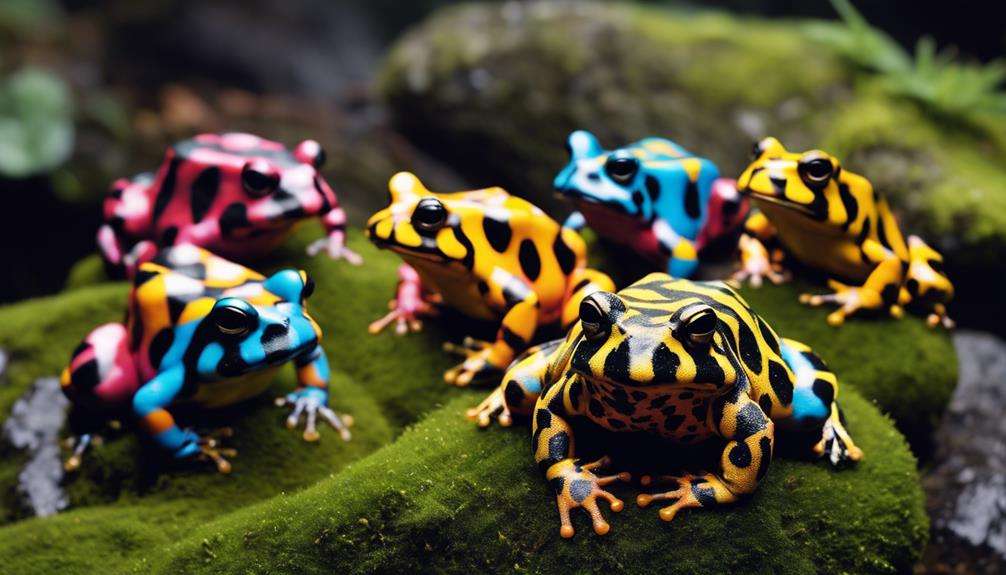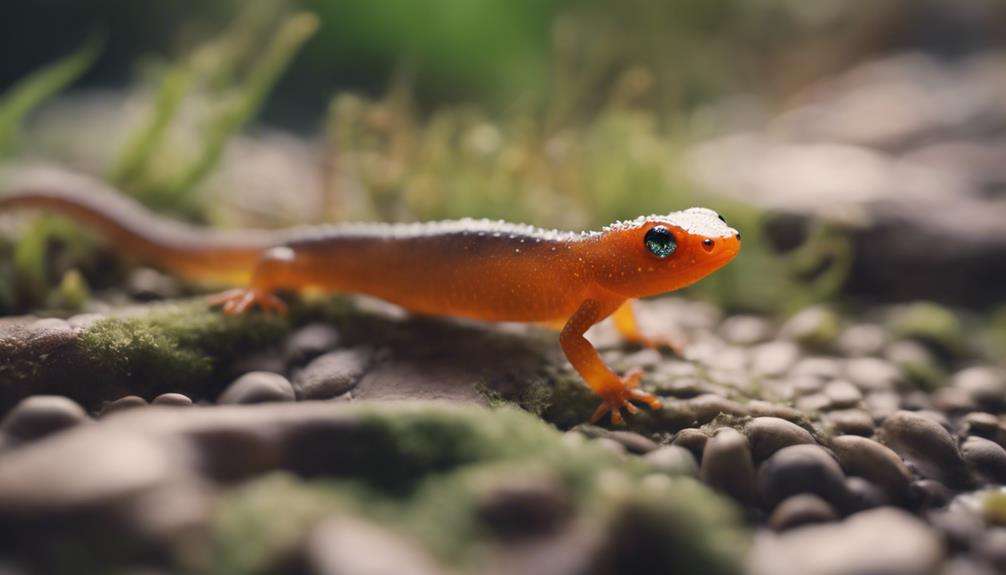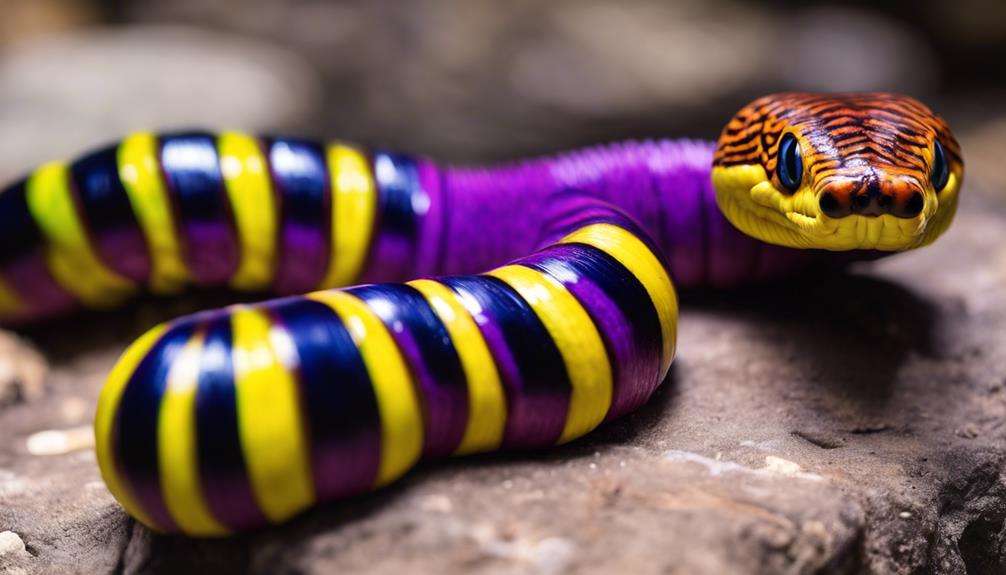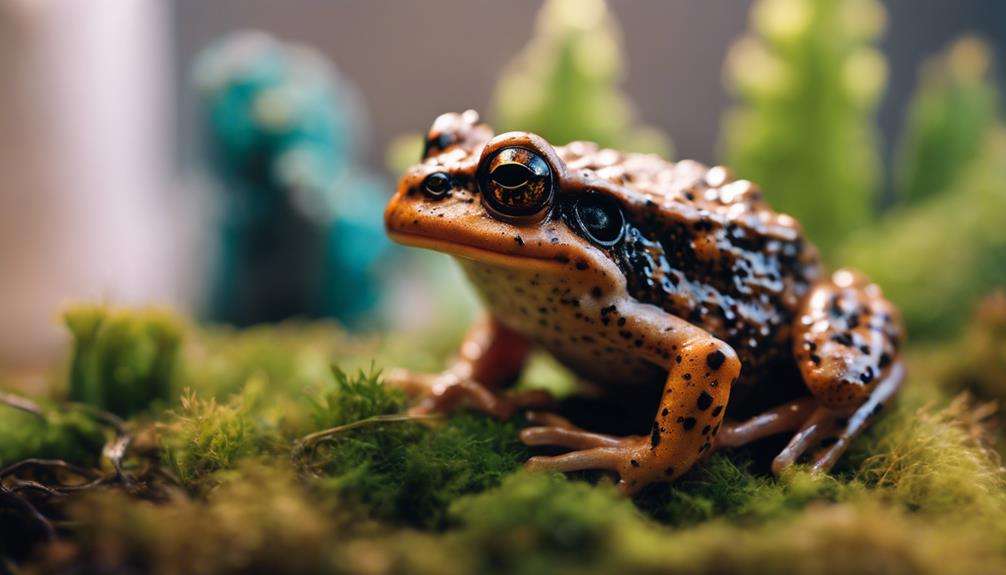Have you ever pondered the allure of having a pet that embodies both elegance and mystery?
Newts, with their intriguing behaviors and captivating appearance, offer a unique pet ownership experience that appeals to those seeking a touch of the extraordinary in their lives.
These amphibious creatures possess a charm that goes beyond their physicality, drawing enthusiasts into a world of wonder and exploration.
Their allure extends far beyond the surface, making them a compelling choice for those looking to bring a touch of magic into their homes.
Key Takeaways
- Active nature and unique behaviors make newts intriguing pets to observe.
- Minimal handling requirements suit those seeking low-maintenance interactions.
- Varied diet preferences offer insights into their natural behaviors and health needs.
- Regenerative abilities and diverse species traits add to the appeal of keeping newts as pets.
Unique Newt Species as Pets
When considering unique newt species as pets, the Eastern Newt stands out for its vibrant orange juvenile stage that captivates many enthusiasts. These newts are a popular choice due to their stunning coloration and relatively easy care in captivity. The Eastern Newt is a fascinating species to observe, especially during their breeding season when their courtship behaviors are on full display.
In addition to the Eastern Newt, other species like the Smooth Newt, Yunnan Lake Newt, Northern Crested Newt, and California Newt offer pet owners a diverse range of options. Each species has its own unique characteristics, from the distinct mating rituals of the Smooth Newt to the striking appearance and breeding behaviors of the Northern Crested Newt.
Among these species, the California Newt stands out for its toxic nature, which serves as a defense mechanism against predators. Witnessing their colorful displays during courtship can be both mesmerizing and educational for those interested in these captivating creatures. Newts truly make for an exciting and colorful addition to any pet lover's collection.
Newt Behavior and Interaction
As you observe your newt's behavior, notice their active nature and natural curiosity, making them exciting pets to watch. They thrive on interaction without needing excessive handling, showcasing their unique charm.
Placing their tank in a vibrant area can keep them engaged and bring out their playful instincts.
Feeding Habits
To understand the captivating world of newts, delve into their intriguing feeding habits, revealing insights into their behavior and interaction with their environment. Newts, being omnivores, require a varied diet consisting of worms, insects, and water snails to thrive. Providing such a diet is crucial for their health and well-being in both natural and captive settings.
By observing their feeding preferences, you can gain valuable information about their behavior and how they interact with their surroundings. This understanding not only helps in meeting their dietary needs but also in creating a suitable habitat that enriches their lives.
Handling Tips
Understanding how newts behave and interact is key to providing optimal care and ensuring their well-being as fascinating pets. Newts prefer minimal handling to maintain their comfort. While they enjoy interaction, it's best not to hold or cuddle them.
Placing their tank in a lively area can prevent boredom and stimulate natural behaviors. Consulting a veterinarian for specific care advice based on the newt species is crucial for their health. Choosing companions carefully and creating a suitable environment are vital for promoting positive newt behavior and interaction.
Newt Habitat Requirements
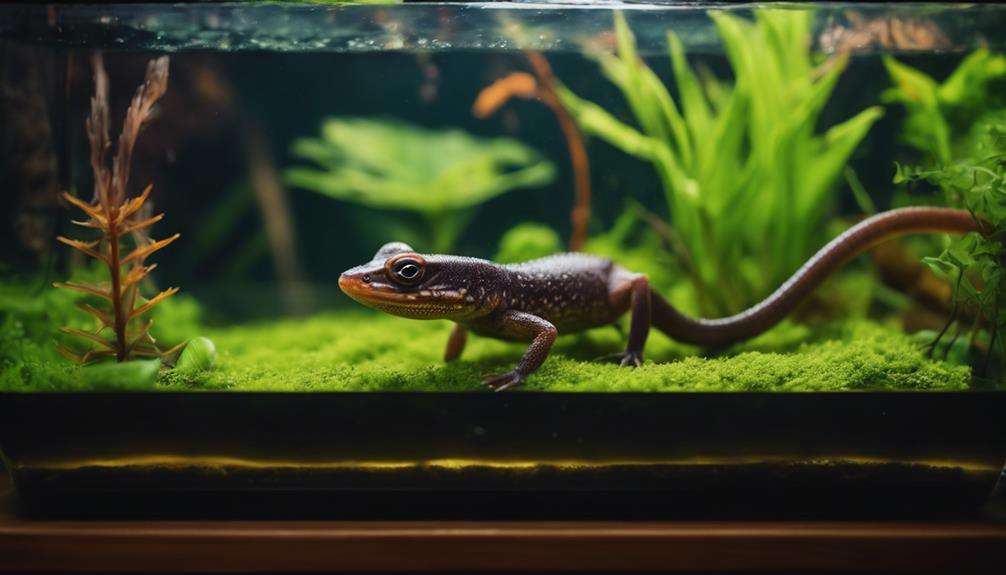
Ensuring a suitable habitat for your newt is essential for their health and well-being in captivity. When setting up a newt habitat, consider the following requirements:
- Large Tank: Newts require a spacious aquarium with ample water for swimming and exploring. A larger tank provides room for movement and allows for the creation of distinct aquatic and land areas within the enclosure.
- Climbing Surfaces: Incorporating rocks, driftwood, or plants in the habitat allows newts to climb and bask out of the water. Providing a variety of surfaces encourages natural behaviors and promotes physical exercise.
- Water Quality Maintenance: Regularly test the water parameters such as pH, ammonia levels, and temperature to ensure optimal conditions for your newt. Utilizing filtration systems helps in keeping the water clean and free from harmful substances, contributing to the overall well-being of your pet.
Feeding Your Pet Newt
When caring for your pet newt, providing a diverse and nutritious diet is crucial for their overall health and vitality. Newts thrive on a variety of foods, including Reptomin Food Sticks, freeze-dried shrimp, gelled insects, canned snails, and frozen fish foods.
Live food such as blackworms is essential to balance their diet, especially for larvae and sub-adults. Earthworms should be offered as a staple food source to ensure the long-term health of your pet newt.
During warmer months, consider incorporating wild-caught invertebrates like roaches, butterworms, and silkworms to provide additional nutrients.
Health and Wellness of Newts
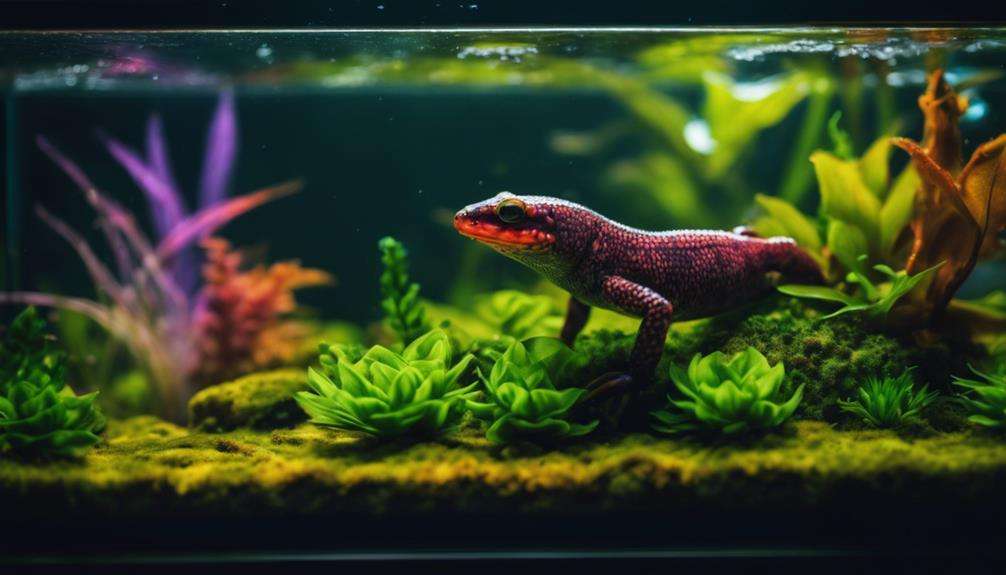
For optimal health and wellness, newts require a cool and clean habitat with proper filtration. It's essential to ensure the following for the well-being of your newt:
- Regular Water Changes: Implementing routine water changes is crucial to maintain the pH balance necessary for your newt's health. Clean water is vital for their overall wellness.
- Monitoring Behavior: Keep a close eye on your newt's behavior as it can indicate signs of stress or skin issues. Early detection can lead to prompt care and treatment, ensuring your newt stays healthy.
- Proper Substrates: Providing appropriate substrates in the tank is essential to prevent skin problems in your newt. The right substrate can help maintain skin health and prevent any potential issues.
Newt Reproduction Insights
To gain a deeper understanding of newt reproduction, consider the intricate mating behaviors and egg-laying processes that contribute to the remarkable life cycle of these fascinating creatures. Newts typically breed in early spring, with males using tail vibrations to attract mates. During this time, females can lay up to 400 eggs on plants in the water. These eggs hatch in 10-20 days, giving rise to larvae.
In the wild, newts have a lifespan of 2 to 15 years, but in captivity, they can live up to 20 years. One of the most intriguing aspects of newts is their ability to regrow lost or damaged limbs, a unique trait that sets them apart. Additionally, newts release neurotoxins from their skin for protection, adding to their fascinating characteristics.
Understanding the reproductive habits of newts can provide valuable insights into their development and care as pets.
Newt Environmental Enrichment Tips
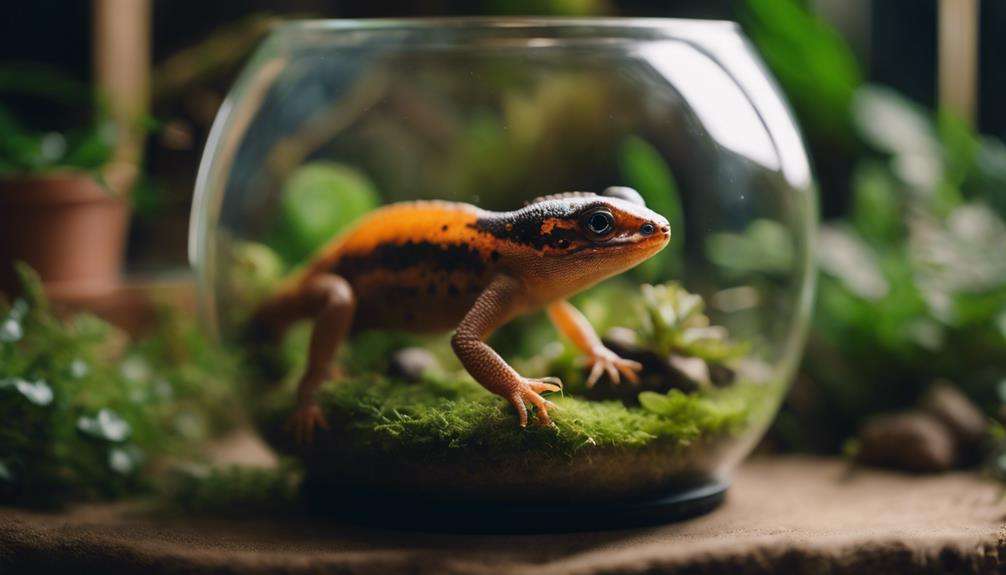
Explore ways to enhance your pet newt's environment with enriching features that promote their well-being and natural behaviors, such as providing rocks and plants for exploration and hiding spots. To create a dynamic and engaging habitat for your newt, consider the following tips:
- Varied Surfaces: Incorporate different textures like smooth rocks, branches, and gravel to encourage movement and exploration, mimicking their natural environment.
- Hiding Spots: Offer shelters like caves, hollow logs, or artificial plants to give your newt secure places to retreat to, reducing stress and promoting a sense of security.
- Basking Surfaces: Place flat rocks or driftwood near the heat source in the tank to provide your newt with areas to bask and regulate their body temperature effectively.
Handling and Care Techniques
When caring for your newt, ensuring a proper habitat setup and meeting their nutritional requirements are key factors in their well-being.
Creating an environment that mimics their natural habitat can help reduce stress and encourage their natural behaviors.
Remember that consulting with a veterinarian specialized in exotic pets can provide valuable insights tailored to your newt's specific needs.
Proper Habitat Setup
For optimal well-being and contentment, ensure your newts' habitat is thoughtfully designed to mirror their natural environment. Here are essential tips for setting up a suitable habitat for your newt:
- Aquarium Setup: Provide a spacious tank with both water and climbing surfaces like driftwood or rocks to allow your newts to explore and exercise their natural behaviors.
- Substrate and Decor: Use smooth, rounded gravel as substrate, and include rocks and plants for hiding and resting spots, creating a comfortable and stimulating environment for your newts.
- Chemical-Free Environment: Ensure the habitat is free from chemicals, especially chlorine, as these can be harmful to your newts' health. Consulting a veterinarian can also provide tailored care advice for your specific newt species.
Nutritional Requirements
To ensure optimal health and vitality for your newts, it's crucial to provide a varied diet that includes live insects, dried shrimp, and reptile food. Newts require optimal nutrition to thrive, so offering a balanced diet with appropriate supplements is essential.
Water quality is paramount as newts absorb water through their skin, making hydration and cleanliness key aspects of their care. Following specific care guidelines from a veterinarian based on the newt species ensures they receive the necessary nutrients for growth and development.
Newt Species Comparison Guide
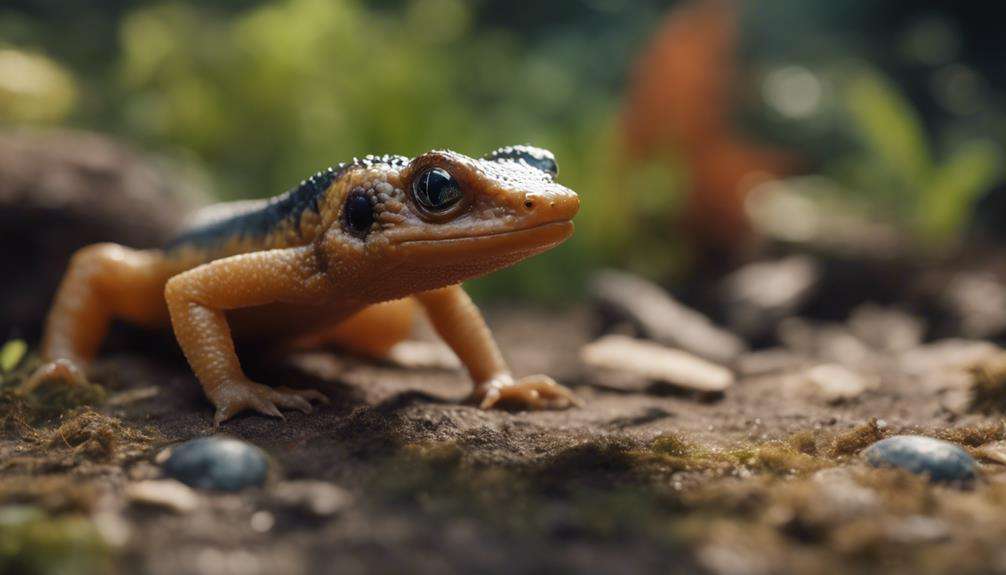
Comparing popular newt species like Eastern Newts, Smooth Newts, Yunnan Lake Newts, Northern Crested Newts, and California Newts reveals fascinating insights into their unique traits, habitats, and behaviors.
- Unique Traits and Habitats:
- Eastern Newts: They've the ability to live both in water and on land, with bright orange skin during their terrestrial juvenile phase.
- Smooth Newts: These newts display a smooth, velvety skin texture and are commonly found in Europe and parts of Asia.
- Yunnan Lake Newts: Endemic to China, these newts are known for their striking black and orange coloration, adapting to high-altitude lake habitats.
- Mating Behaviors and Toxic Capabilities:
- Northern Crested Newts: Males develop a prominent, serrated crest during the breeding season to attract females.
- California Newts: They possess potent toxins in their skin secretions, serving as a defense mechanism against predators.
- Conservation Status and Threats:
- While some species like the Eastern Newt are of Least Concern, others like the Yunnan Lake Newt face challenges due to habitat loss and pollution.
Fun Facts About Newts
Did you know that newts possess incredible regenerative abilities, allowing them to grow back lost limbs?
Some species of newts also use neurotoxins to defend themselves against predators, making them intriguing creatures to observe.
With their diverse diet and unique adaptation to semi-aquatic environments, newts offer a fascinating glimpse into the wonders of the natural world.
Unique Newt Adaptations
Newts exhibit a fascinating array of unique adaptations that set them apart from other amphibians in the animal kingdom. These adaptations include:
- Regeneration: Newts can regrow lost or damaged limbs, showcasing their incredible ability to heal and adapt.
- Neurotoxin Release: They release a neurotoxin from their skin for protection against predators, highlighting their defense mechanisms.
- Breathe Underwater: Newts have the remarkable capability to breathe underwater through their skin, allowing them to thrive in aquatic environments.
These adaptations, along with their intricate mating behaviors, reproductive prowess, and survival strategies such as laying up to 400 eggs at once, make newts truly remarkable creatures to consider as pets.
Newt Color Variations
With their captivating array of colors and striking patterns, newts showcase a mesmerizing display that captivates any observer, making them intriguing pets to admire. Newts exhibit a wide range of color variations, from vibrant reds and oranges to bright yellows and greens. In addition to their colorful appearance, some newts feature intricate patterns and markings that add to their allure.
These colors often act as warning signals to predators, indicating the presence of toxic skin secretions. Interestingly, the color variations in newts can change as they progress through different life stages, transitioning from larvae to adults. The visual appeal of these fascinating creatures is truly unparalleled, making them a delightful choice for pet enthusiasts seeking a unique and visually stimulating companion.
Frequently Asked Questions
What Are 3 Interesting Facts About Newts?
Newts exhibit fascinating behaviors, such as regrowing limbs and releasing toxins for defense. Their adaptations include breathing underwater through their skin. Some species are colorful and can live up to 20 years. Their reproduction involves laying hundreds of eggs in water.
Do Newts Make Good Pets?
Newts make excellent pets for busy folks seeking a low-maintenance companion. Their fascinating behavior, unique traits like limb regrowth and toxin release, and long lifespan make them a delightful addition to your home.
Can You Keep a Wild Newt as a Pet?
You should not keep a wild newt as a pet due to legal and ethical reasons. Wild newts need their natural habitat to thrive, and capturing them can harm ecosystems. Opt for captive-bred newts for responsible pet ownership.
What Can You Do With a Newt?
With newts, you can observe their fascinating behavior, vibrant colors, and unique adaptations in a well-designed habitat. Providing proper care, diet, and enrichment can enhance their lifespan and contribute to newt conservation efforts.
Conclusion
Now that you've learned about the fascinating world of newt pets, consider this: Did you know that some newt species can regenerate lost limbs?
This incredible ability showcases just how unique and resilient these creatures are. By providing the proper care, habitat, and enrichment, you can enjoy many years of companionship and observation with your pet newt.
So why not add a newt to your family and experience the wonder of these amazing creatures firsthand?
